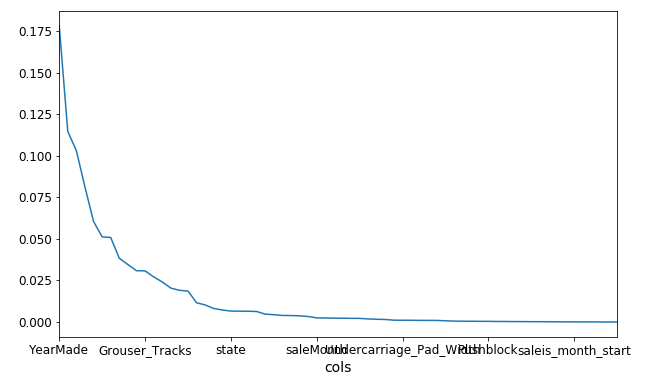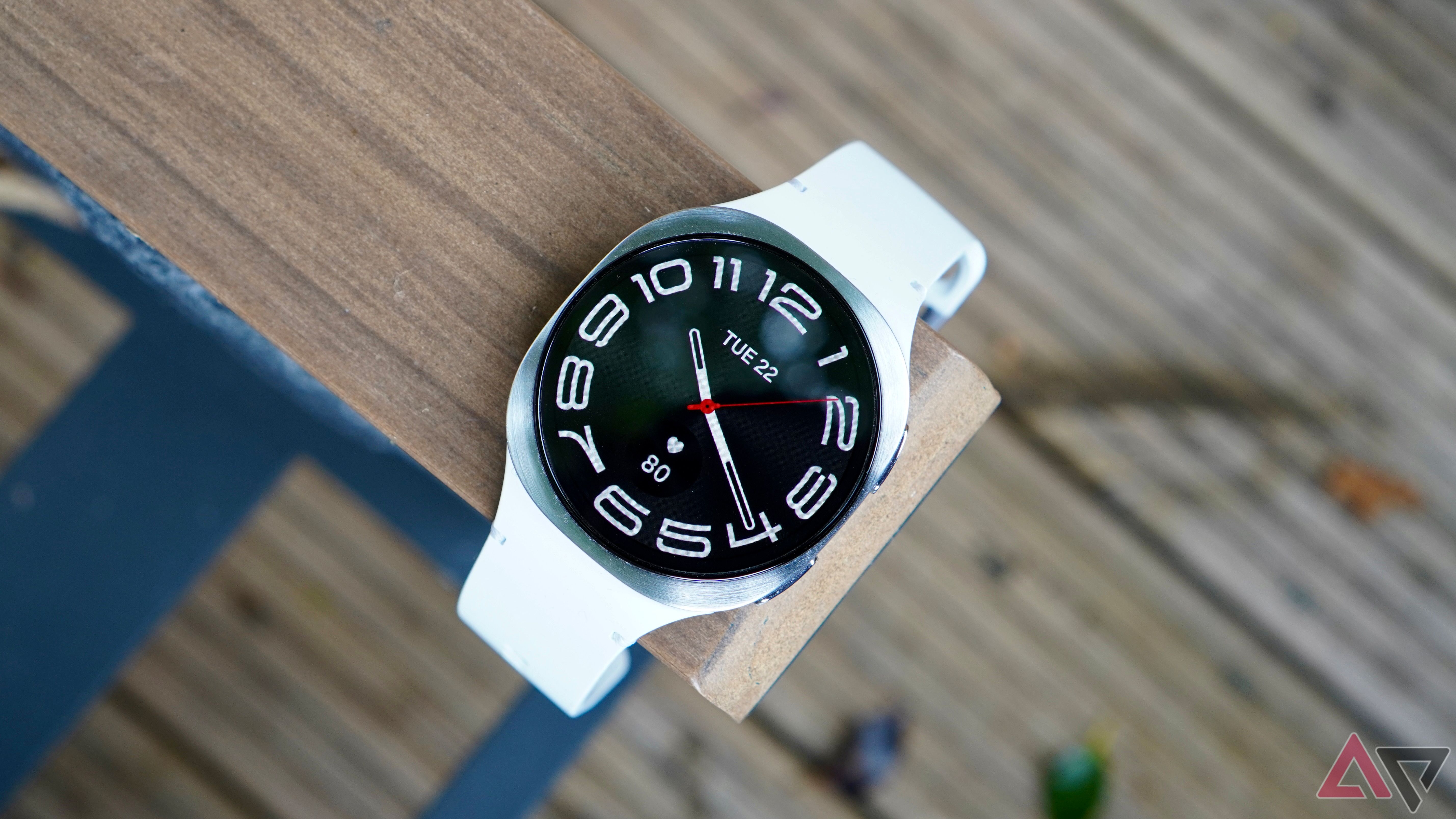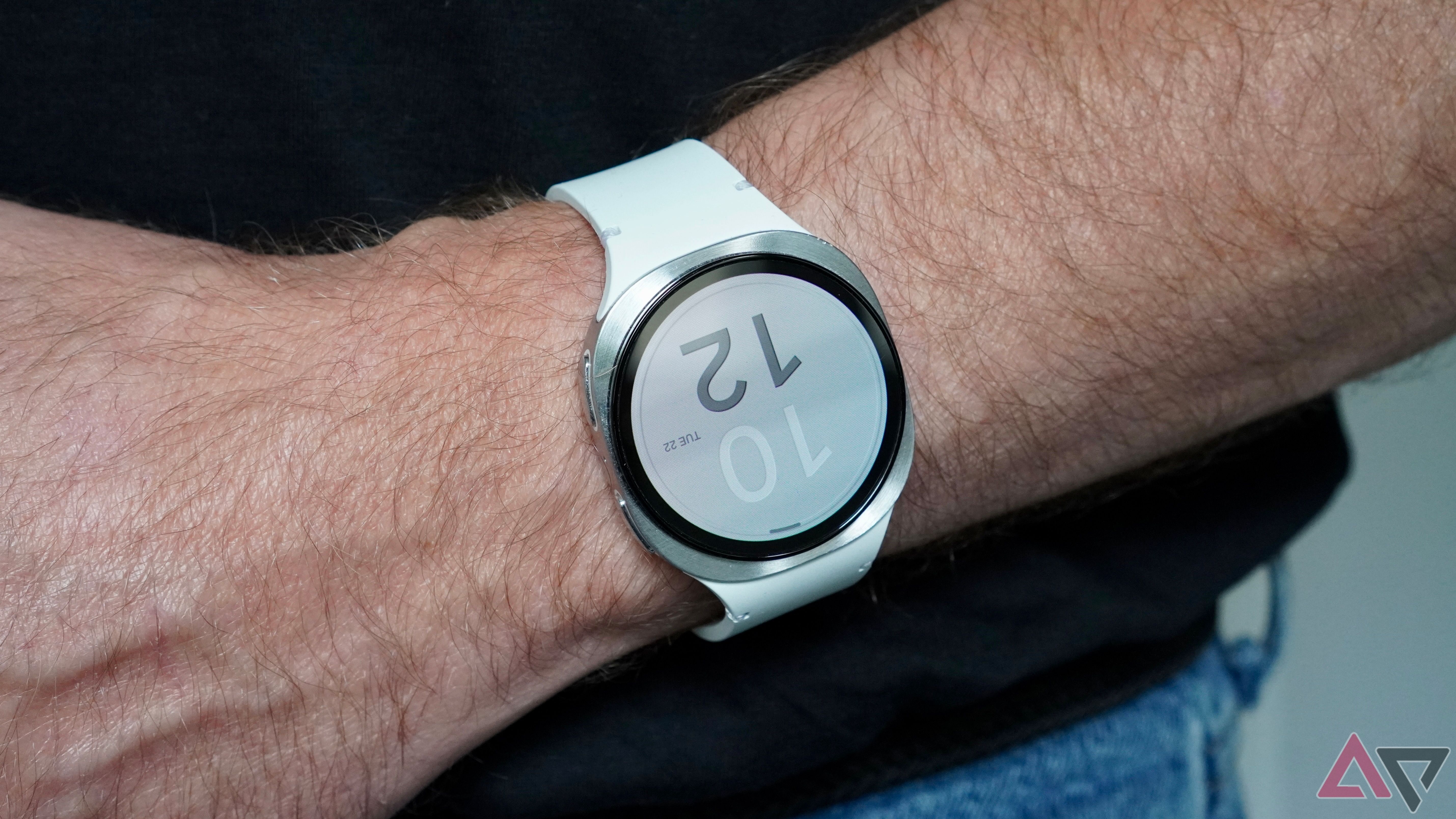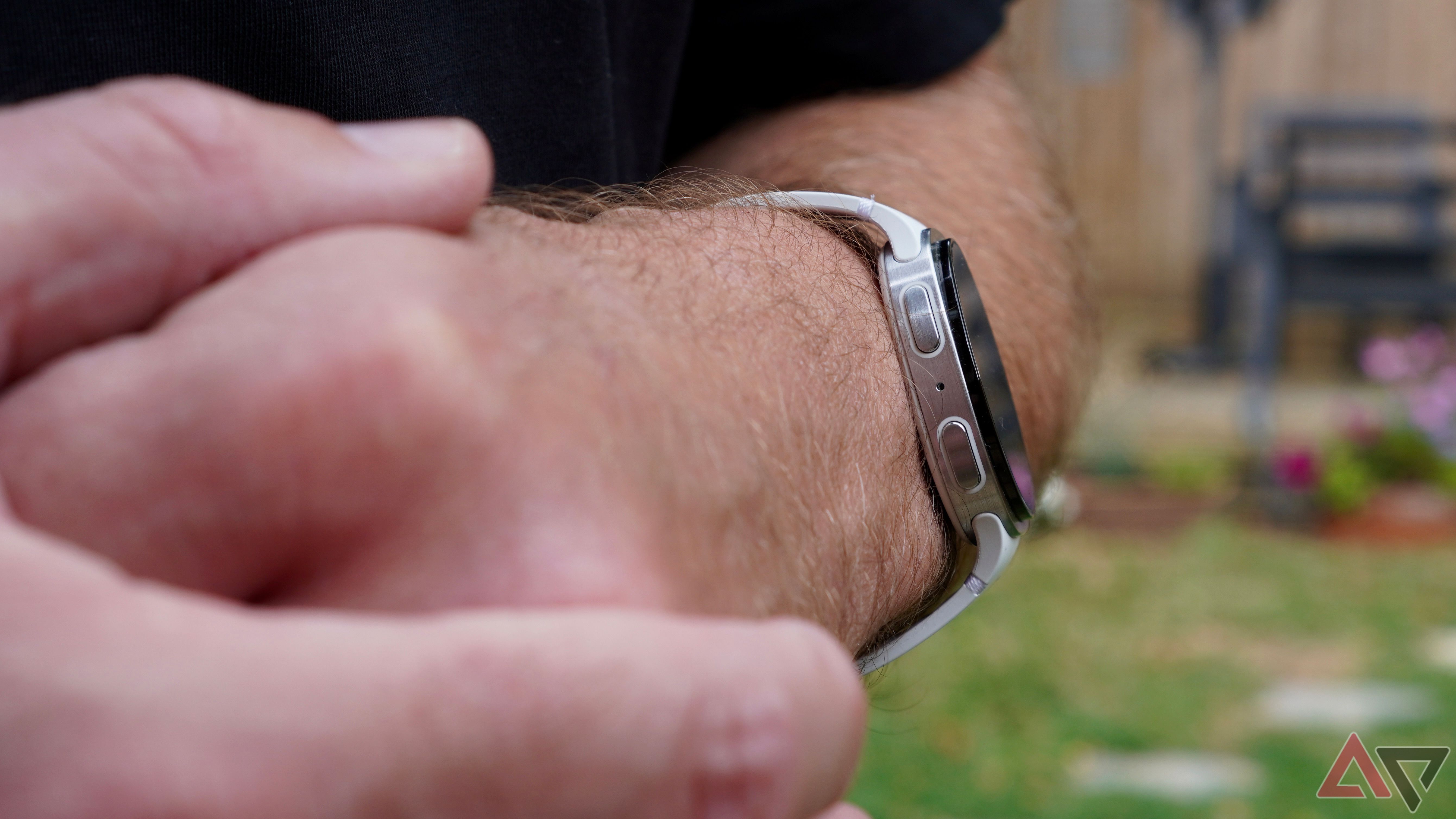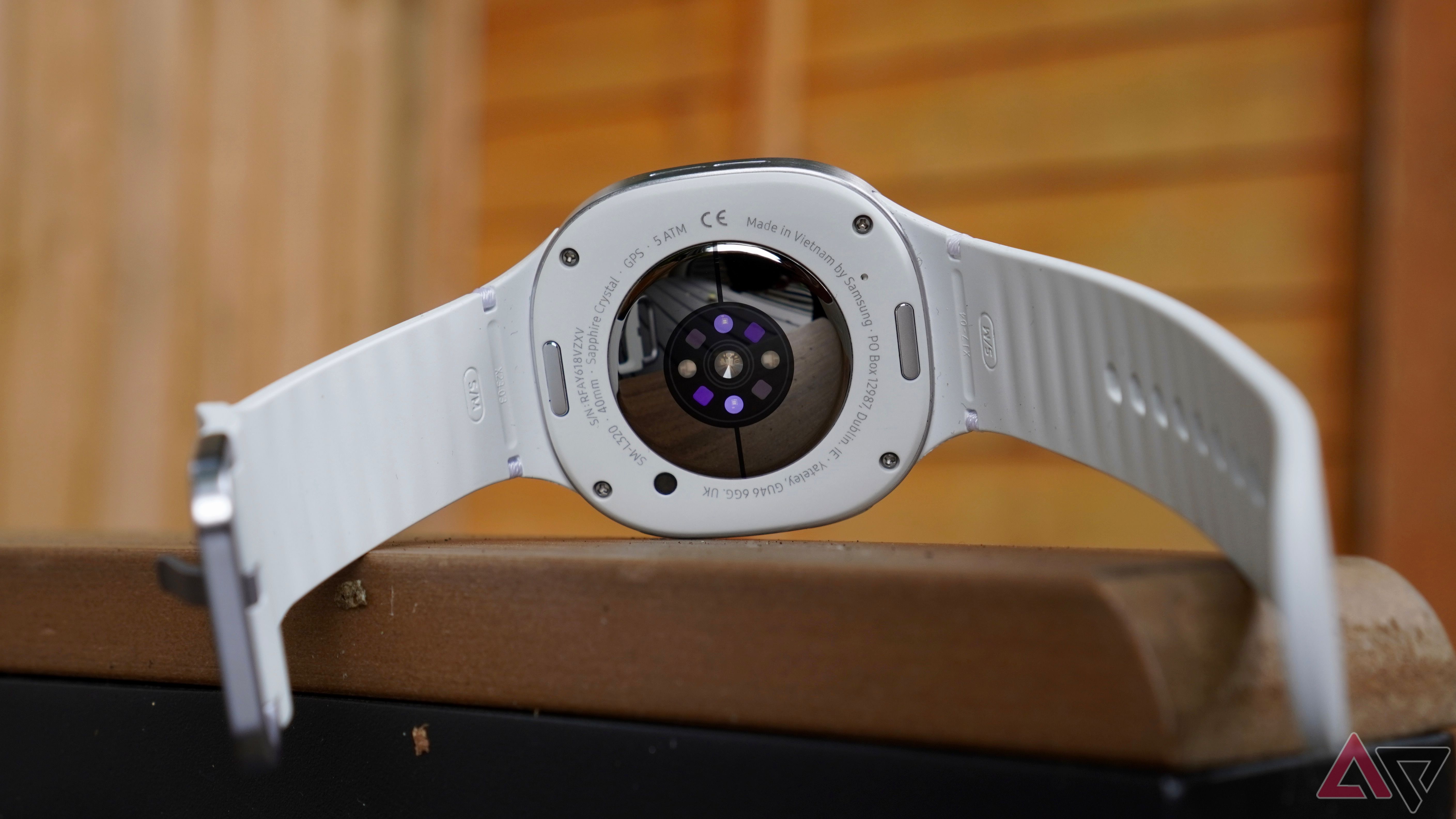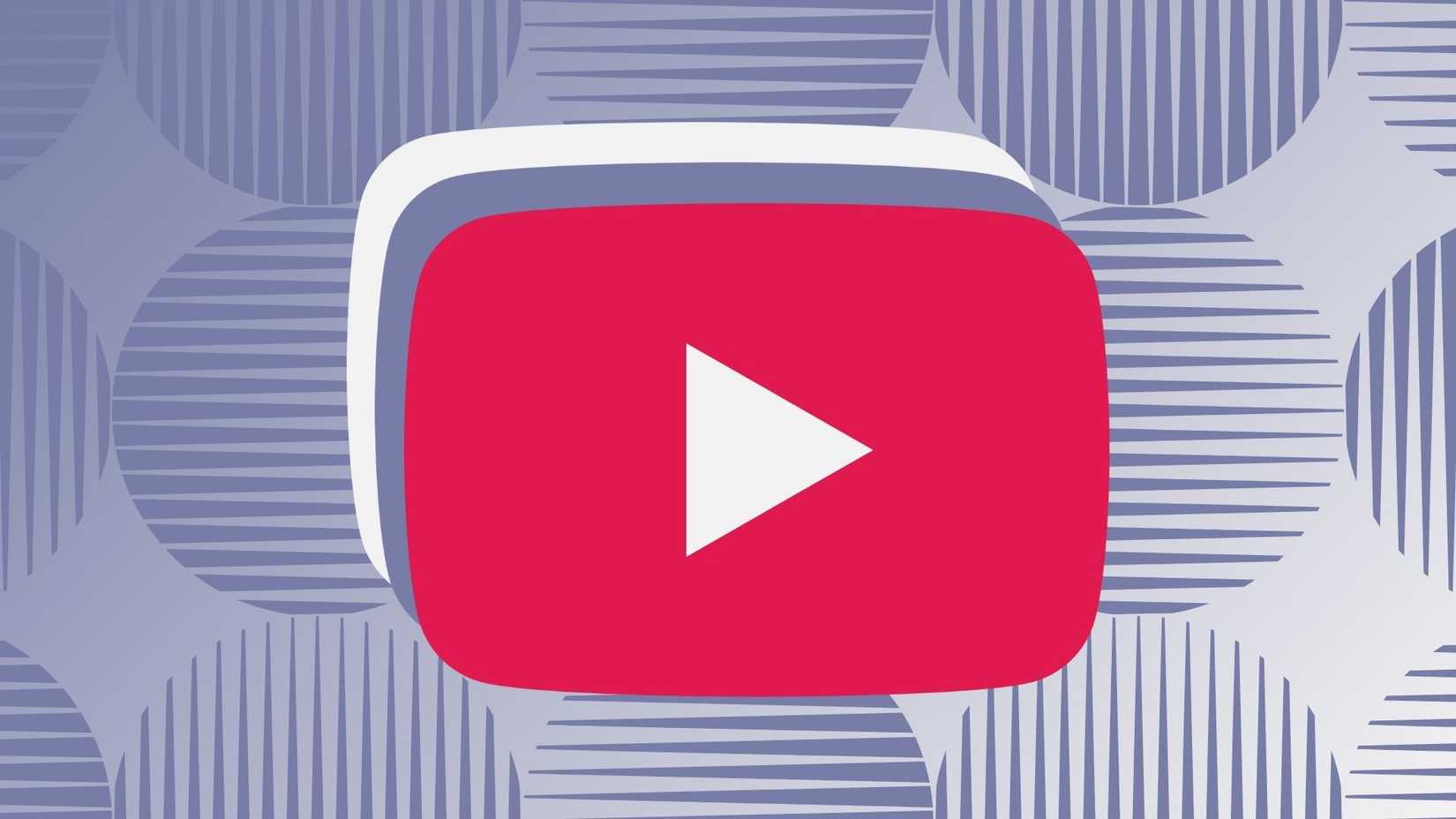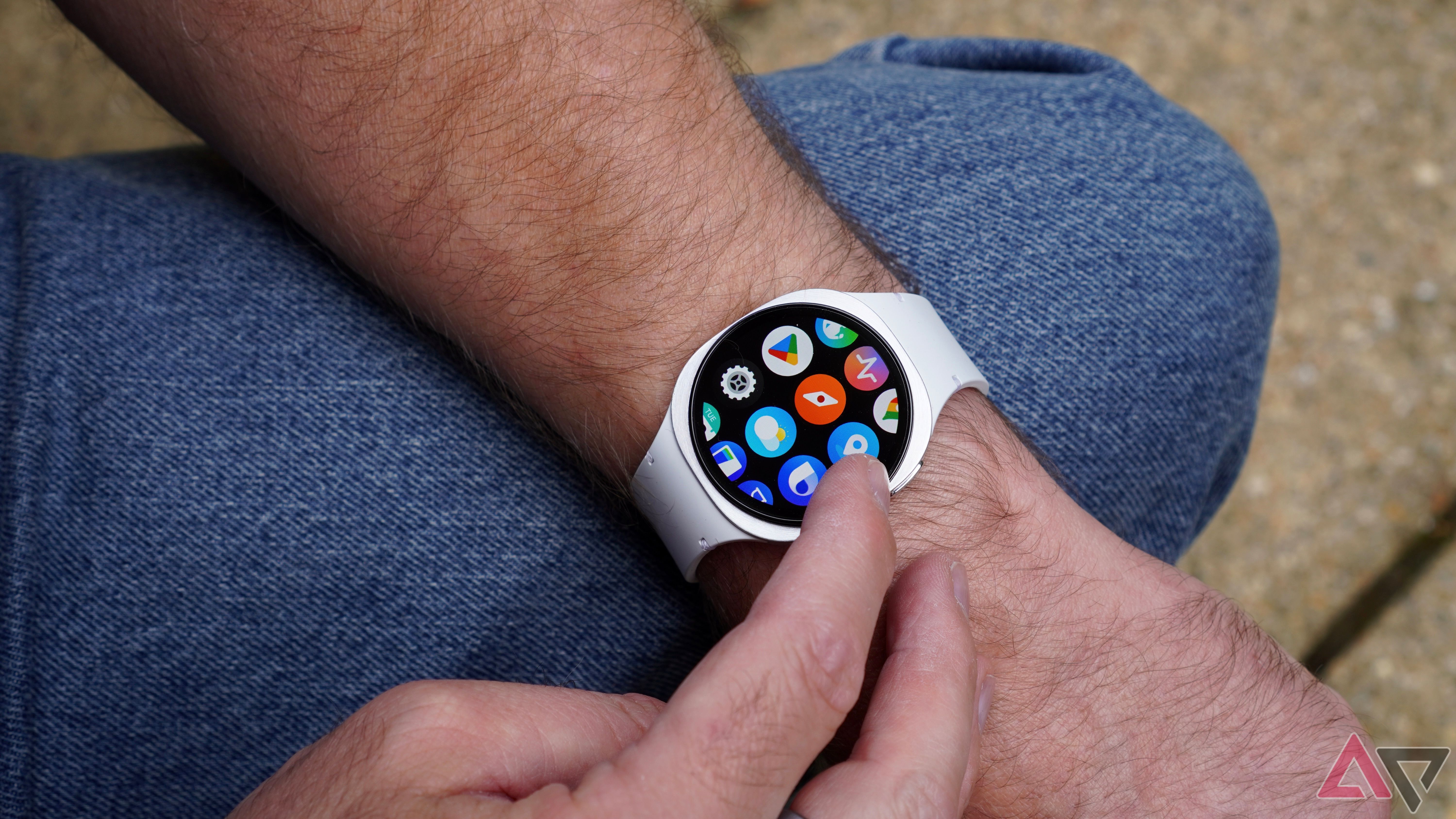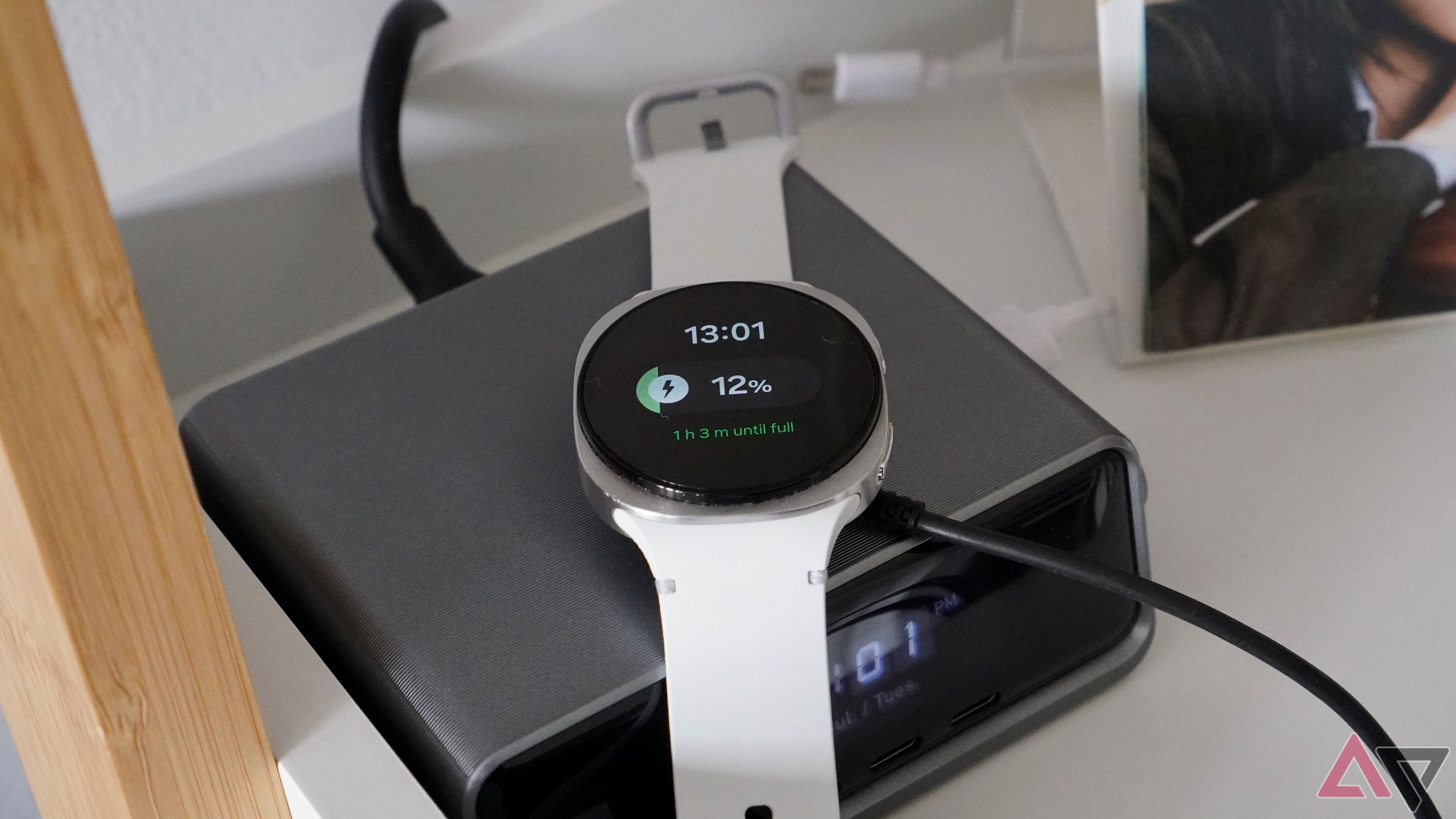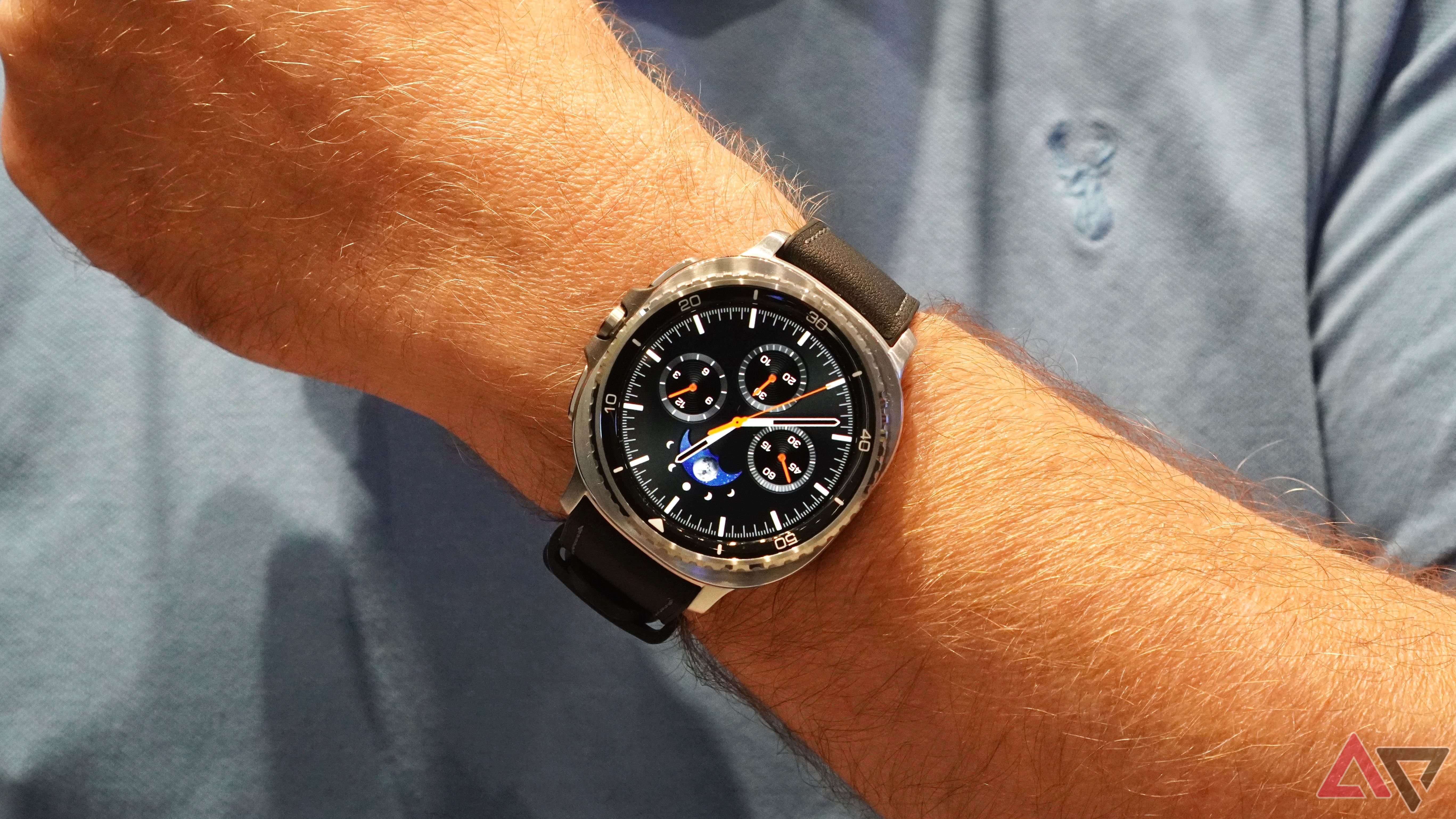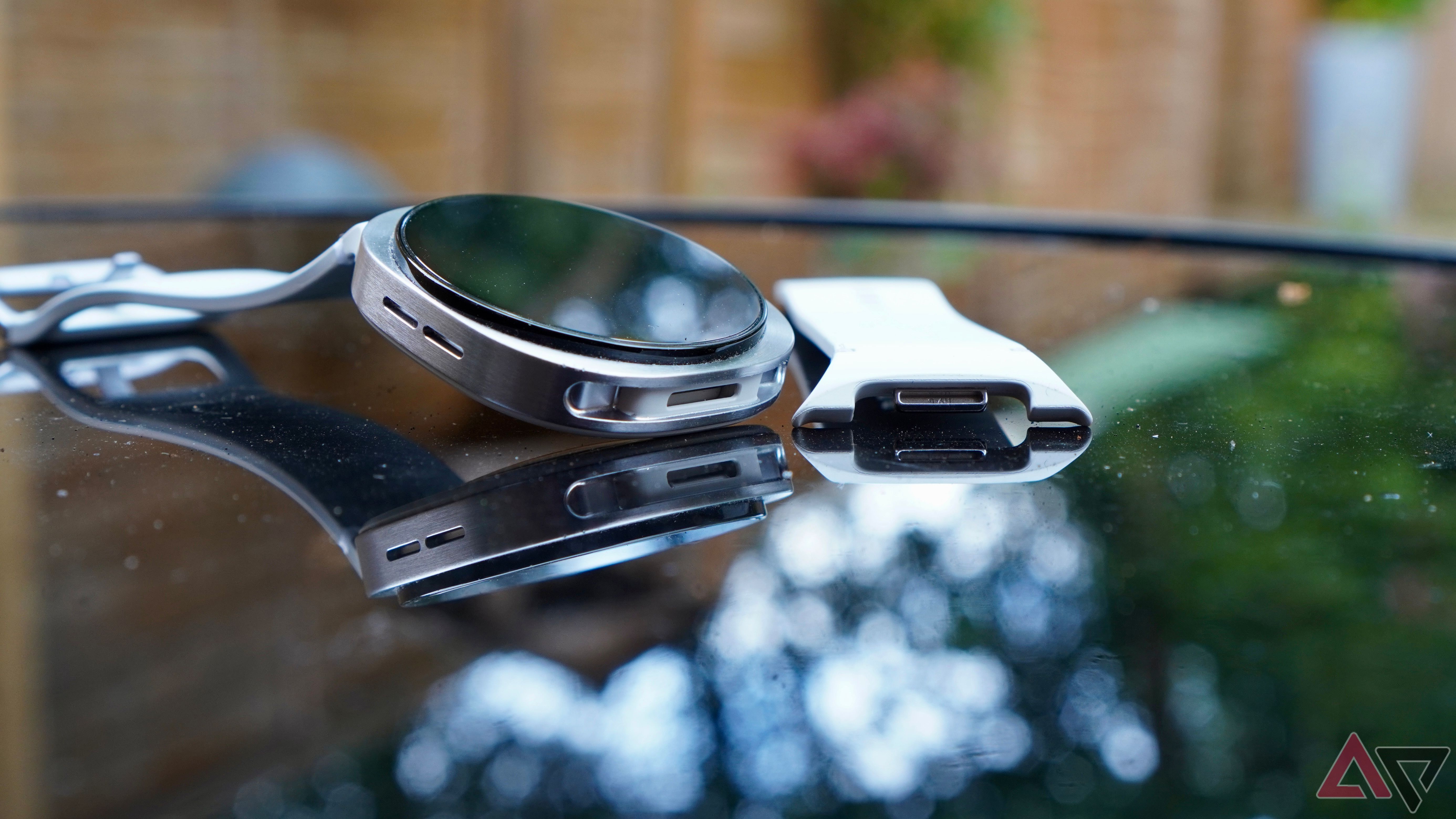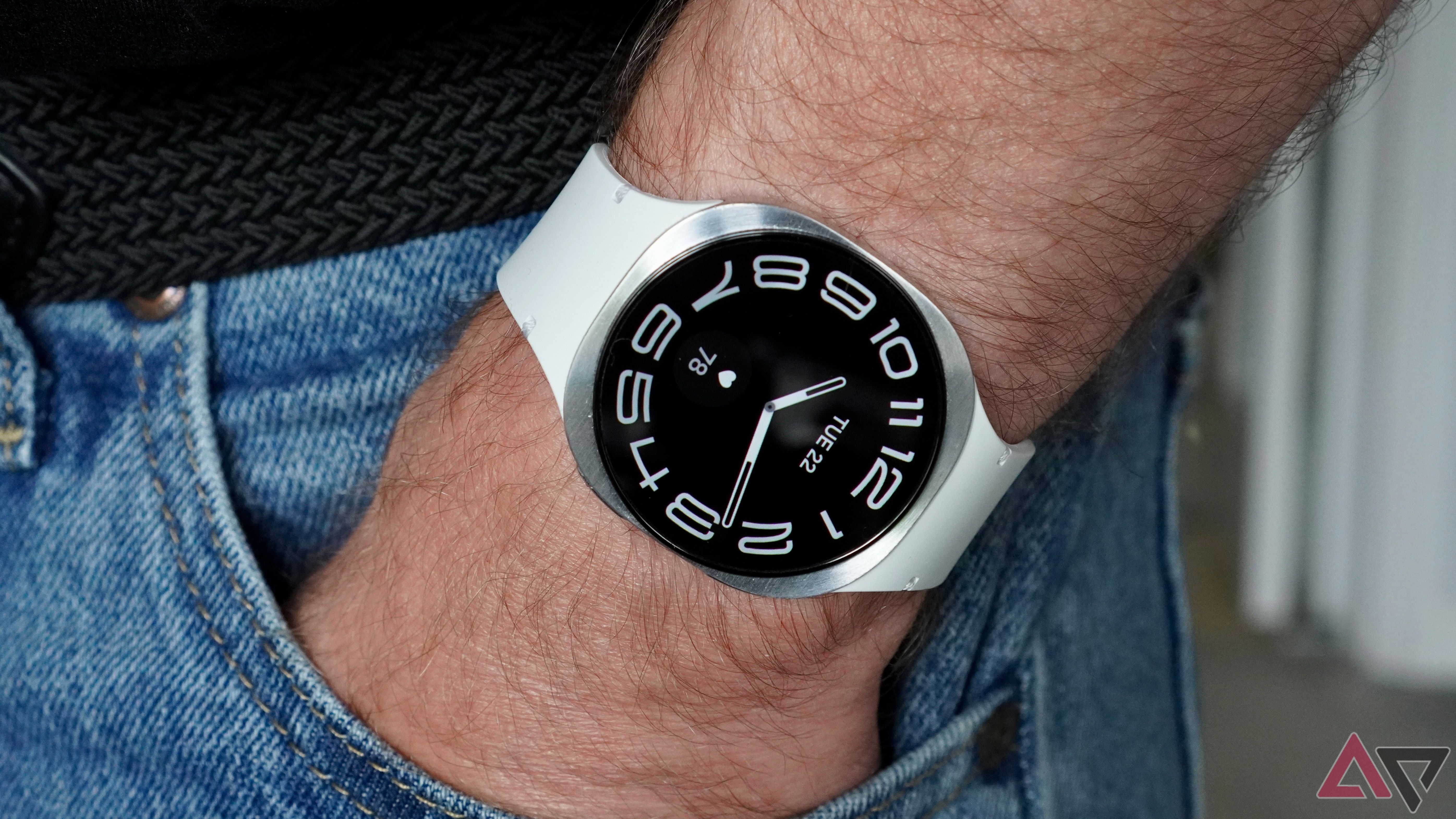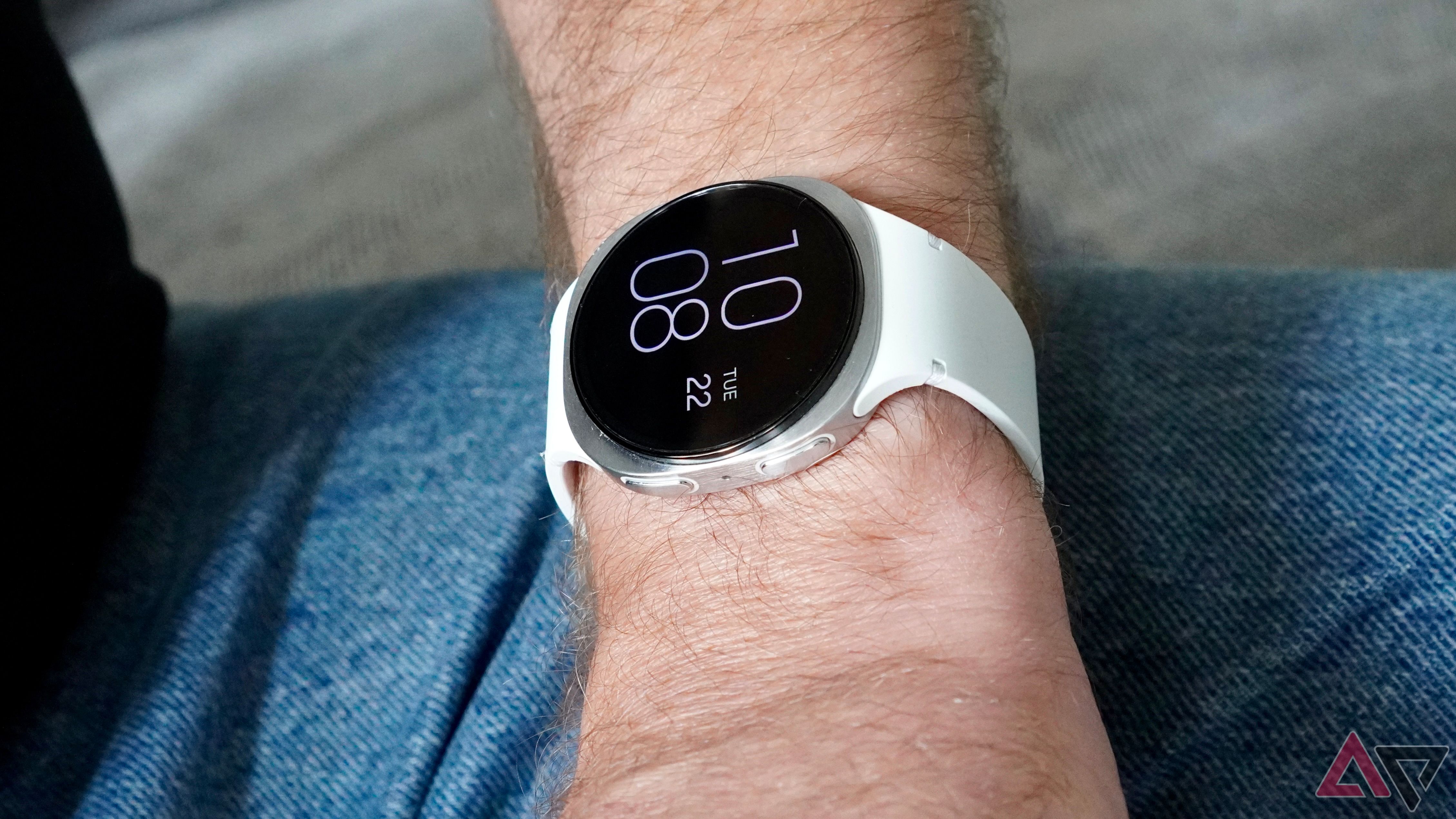The Galaxy Watch 8 fixes a serious problem that has plagued Samsung’s smartwatches in the past.
The unusual cushion shape has given it real personality and a character all of its own, something Samsung’s standard smartwatches have never really had.
It’s something I didn’t expect at all when I first saw it. What has life been like with the Galaxy Watch 8, now that I’m used to the design?
I’m pretty smitten, but unfortunately, the rest of the watch hasn’t taken such a leap forward, and it makes the higher price tough to justify.
Samsung Galaxy Watch 8
- Case size
-
40mm/44mm
- Display
-
1.3-inch/1.5-inch Super AMOLED
- CPU
-
Exynos W1000
- Colors
-
Graphite/Silver
The Samsung Galaxy Watch 8’s minimalist cushion design is a surprise winner, and it’s one of the lightest and most comfortable smartwatches to wear 24-hours a day. The health tracking updates build on what was already a comprehensive list, but the battery life falls behind the competition.
- Thin and lightweight
- One UI 8 Watch is simple to use
- Comprehensive health tracking
- Eyecatching minimalist design
- Two case sizes available
- Some software bugs
- No IP Rating
- One day battery life
Specs, price, and availability
The Galaxy Watch 8 comes in two case sizes, 40mm and 44mm, with or without 4G, and in two color options: graphite and silver.
The graphite model comes with a matching graphite band, and the silver version comes with a white band. Plus, you can purchase additional bands from Samsung.
The Galaxy Watch 8 uses a proprietary band attachment system, called Dynamic Lug, which means you can’t attach bands made for previous Galaxy Watch models to it, or use standard straps for non-smart watches.
You should also know that the Samsung Health app does not require a subscription, and all health features are available for free. This is different from Fitbit on the Pixel Watch 3 and some smart ring options like the Oura Ring.
The 40mm Galaxy Watch 8 costs $350 and the 44mm Galaxy Watch 8 costs $380. Add another $50 to each price to get a 4G LTE connection and leave your phone behind when you’re out.
Samsung Galaxy Watch 8
- Case size
-
40mm/44mm
- Display
-
1.3-inch/1.5-inch Super AMOLED
- Display resolution
-
438 x 438
- CPU
-
Exynos W1000
- RAM
-
2GB
- Storage
-
32GB
- Battery
-
325mAh/435mAh
- Bluetooth
-
5.3
- Software
-
One UI 8 Watch/Wear OS 6
- Dimensions
-
42.7 x 40.4 x 8.6mm/46.0 x 43.7 x 8.6mm
- Weight
-
30g/34g
- Colors
-
Graphite/Silver
- Price
-
$350/$380
- ATM Rating
-
30ATM
- Sensors
-
Accelerometer, Barometer, Bioelectrical Impedance Analysis Sensor, Electrical Heart Sensor, Gyro Sensor, Geomagnetic Sensor, Infrared Temperature Sensor, Light Sensor, Optical Heart Rate Sensor
About that design
Squircle for the win?
I’ve been wearing the 40mm Galaxy Watch 8, and although I’d normally opt for the larger case size when choosing a smartwatch, I think the small model is going to be the sweet spot for most people this time.
You can see it on my 6.5-inch wrist in the photos, and it’s just right. There’s no overhang on the case, yet it also doesn’t look too diminutive, while the 1.3-inch Super AMOLED screen never appears too small.
The reason it works is because of the squircle, or cushion in watch-speak, case design.
Firstly, it wears larger than it actually is, and secondly, Samsung has really leaned into the minimalist style with the Watch 8.
The simple cushion case has two buttons on the side, which are almost flush, while the circular screen sits proud on the case, free from any kind of bezel.
The integrated strap softens the cushion case’s shape well, but it is more restrictive if you want to change to a different one in the future.
I also think it works best with minimalist, less complicated watch faces.
I’ve had multiple compliments about the Watch 8, with most commenting on how cool the minimalist design looks, especially the silver and white combo I’ve been testing.
This almost never happens for any smartwatch, and indicates people may be receptive to Samsung’s daring decision to go all-in with the squircle. It has certainly won me over, and not only due to the well-judged minimalist style.
It’s also really thin and light. It’s only 8.6mm thick and weighs 46 grams with the silicone strap.
I’ve worn it to track sleep without any comfort issues, even on some very hot and humid nights. During the day, it’s barely noticeable and easily slips under a cuff.
The 30ATM water resistance helps with durability, but I’d have liked a full IP rating for dust protection.
You’ll also want to invest in some cotton swabs, because it gets really grubby where the case meets the screen.
Finally, the aluminum used for the case is relatively soft, and my review model has already picked up a nick or two, indicating it may look worse for wear quickly if you engage in tough sports or activities.
All this aside, the Galaxy Watch 8’s unusual design is a surprising win, especially in lightweight 40mm form, and I’d happily continue wearing it.
New health features
Are they really informative?
The Galaxy Watch 8 has gained a handful of new health features over the Galaxy Watch 7, with the Antioxidant Index and Vascular Load getting the most hype from Samsung, along with an Energy Score and a personal running coach feature.
The Antioxidant Index feature is unusual, as you must take the smartwatch off and press the sensor on the back with your thumb to take a reading.
It’s supposed to tell you the level of carotenoids in your skin, which in turn is a measure of how healthy your diet and lifestyle are.
Despite the odd way of taking a measurement, it does so quickly and easily, and it provides some advice on how to correct a low reading.
However, it can be boiled down to “eat more fruits and vegetables,” and I’m sure most of us don’t need a smartwatch to tell us that.
Vascular Load is less informative, and it’s unclear as to how its results affect you, or can be “improved.”
Both these fit in well with the existing Body Composition and AGEs Index features, in that neither is essential, and many people may only try them once or twice.
While they strengthen the Watch 8’s health tracking feature list, they are not reasons to buy or upgrade from a previous Galaxy Watch model.
Tracking sleep and activity
Old faithful features are still great
Because the Galaxy Watch 8 is so easy and comfortable to wear, it’s ideal for tracking sleep and your everyday activity.
This is where the Energy Score helps, as it uses sleep, activity, and heart rate data to give you a quick reference to how set you are for the day, or whether it’s best to rest for a bit.
It replicates the Oura Ring’s Readiness Score, which I have always found informative and useful.
In general, the Galaxy Watch 8’s sleep data aligns with that of the Oura Ring 4, indicating the results represent how I sleep, although neither is an approved medical device.
I find the automatic sleep tracking to be slow, and the watch face remains lit for some time after I close my eyes, leading me to activate sleep tracking manually in the Watch’s pull-down menu.
The Watch 8’s automatic workout tracking is far more prompt and is very useful when you’re out walking. However, I have noticed it will often auto-pause for a second and restart repeatedly before settling down.
I love the new card-based system for checking health and activity on the watch.
A few swipes on the screen show your activity, complete with Samsung’s clear and fun heart-shaped indicator for steps, active time, and calories burned. It’s then easy to find the ECG, breathing exercises, and other health features.
Speed has been greatly increased with the new One UI 8 Watch menu system.
The Watch 8 connects to the Samsung Health app on your phone, which is informative and well-designed.
However, it needs quite a lot of attention when you first set the Watch 8 up, with a lot of permissions to be granted and features activated.
If you want some of the in-depth tracking, such as blood pressure, electrocardiogram (ECG), and sleep apnea, you must download the additional Samsung Health Monitor app.
Setting up and using two apps is less than ideal, and it’s all too easy to miss out on some health tracking due to features being off by default or hidden in a separate app.
New software experience
Better than ever
It’s worth noting that the Galaxy Watch 8’s general health and activity tracking is not much different from the Galaxy Watch 7.
There’s a long list of activities to track, the GPS is fast and accurate, and if you’re relatively new to running, the personal coach may be of interest.
However, it’s still daunting for newcomers, and you’ll likely find an app for a Couch to 5K program slightly easier.
The software is all-new, and it’s excellent.
Samsung’s One UI 8 Watch presents all the usual information in a new way, moving to cards rather than big tiles, and streamlining the way you interact with them.
It’s highly customizable, with the option to make the watch as complex or basic as you like, right down to the option of a grid or list of apps.
Notifications contain rich levels of interaction, including canned responses and emojis for emails and messages, all from your wrist.
I’ve been frustrated by notifications arriving, though. The watch is bad at recognizing when I raise my wrist to see a newly arrived message, and is subsequently slow at waking up when I manually go to view it on the watch.
This slowness is consistent throughout upon wake-up, but when the watch is going, the Exynos W1000 chip (carried over from the Galaxy Watch 7) is far more reactive.
It’s also worth noting that some Watch 8 and One UI 8 Watches are only available when they’re connected to a Samsung smartphone, and I have reviewed the Watch 8 connected to a Galaxy Z Flip 7.
Otherwise, One UI 8 Watch over Google Wear OS 6 is colorful, engaging, and simple to learn and use, with a more modern design than before.
One UI 8 Watch over Google Wear OS 6 is colorful, engaging, and simple to learn and use, with a more modern design than before.
Oh, before I forget, there’s some AI. Google Gemini is built into the software and accessible with a long-press of the top side button or by voice command.
The Watch 8’s microphone recognized my voice without a problem, and responses were fast, too. However, unless you’re wearing earbuds, everyone will hear Gemini’s usual verbose responses.
Samsung’s Bixby is also onboard.
Galaxy AI is also used to suggest a recommended bedtime and to power the Now Brief, also seen on the Galaxy S25 and other recent Samsung phones.
Battery life and charging
It’s not all good news
The 40mm Galaxy Watch 8’s 325mAh battery needs charging once a day. It may, in total, last a little more than a day on a single charge, but it never gets close to two full days.
If you activate all the sleep tracking features, such as continuous heart rate and sleep apnea monitoring, a single night’s sleep takes at least 20% of the battery on its own. A single 30-minute walk or run with GPS takes 5%.
You recharge the Watch 8 using a proprietary magnetic charging puck, which is included in the box.
It takes 20 minutes to reach about 45%, and around an hour and 20 minutes to go from almost flat to 100%.
The 44mm Galaxy Watch 8 has a larger 435mAh battery, so it should last a little longer on a single charge. However, it does have to power a bigger 1.5-inch screen.
One day of battery life is poor performance, as some of the Galaxy Watch 8’s peers have longer-lasting batteries.
The OnePlus Watch 3 lasts several days on a single charge, like the Mobvoi TicWatch 5 series, and the Huawei Watch 5 can last up to 11 days on a single charge, depending on your use.
It’s also less than the Apple Watch Series 10’s average two days of battery life, but similar to the Google Pixel Watch 3.
Should you buy the Samsung Galaxy Watch 8?
I really like the Galaxy Watch 8 and consider it a recommended purchase for anyone who wants to casually track health, sleep, and activity, with a view to getting more into fitness over time.
There’s plenty of scope in the software and features to get as in-depth as you like, but it’s just as happy keeping things simple.
However, it requires attention during setup, and I’ve noticed various software gremlins, so don’t expect it to be entirely fuss and frustration-free.
Battery life is also disappointing, with no improvement over the Galaxy Watch 7.
There’s no solid reason to upgrade from the last two versions of the Galaxy Watch, unless you’re really taken by the design and low weight.
Design is an area where the Watch 8 succeeds, and it’s easily one of the neatest, most characterful minimalist designs I’ve seen on a smartwatch. It puts the imagination-free, overly simplistic Pixel Watch 3 to shame.
I’d also choose the 40mm over the 44mm version to make the most of the thin case and low weight.
It’s unfortunate that Samsung felt the need to increase the price of the Watch 8 over the Watch 7 and Watch 6, as $300 for the 40mm version always made it a superb value.
The value isn’t as strong here, as it leaves the design and One UI 8 Watch to do a lot of heavy lifting, due to the new health features lacking wide appeal.
I’ll forgive it, though, and consider it my favorite Samsung smartwatch since the Galaxy Watch 6 Classic.
Samsung Galaxy Watch 8
Staff Pick
- Case size
-
40mm/44mm
- Display
-
1.3-inch/1.5-inch Super AMOLED
- CPU
-
Exynos W1000
The Samsung Galaxy Watch 8’s minimalist design, thin case, and low weight make it easy to live with and wear, while the software is customizable and simple to learn and use. It’s let down by short battery life and some software bugs, but is still Samsung’s best smartwatch in a while.


